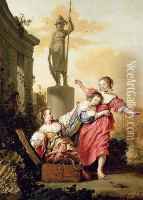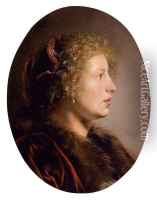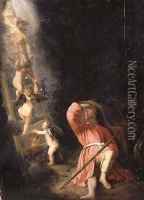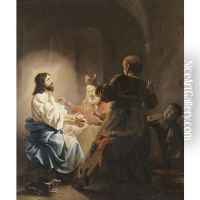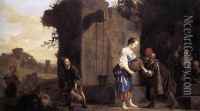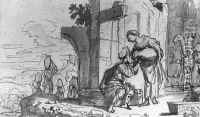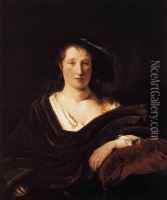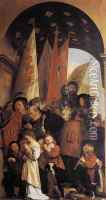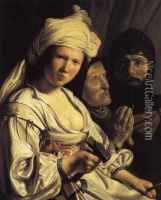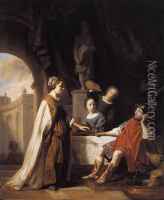Salomon de Bray Paintings
Salomon de Bray was a Dutch Golden Age painter, architect, and poet. He was born in Amsterdam in 1597 and was part of a large family that became prominent in Haarlem, where he spent most of his life. His father was a glass painter, and he probably learned the basics of painting from him.
De Bray was influenced by the works of the great Flemish Baroque artists like Peter Paul Rubens and Anthony van Dyck. He was a versatile artist, working in various genres such as history painting, portraiture, genre scenes, and architectural designs. His architectural works included designing a new city hall for Haarlem, which unfortunately was never built.
In 1630, Salomon de Bray became a member of the Haarlem Guild of St. Luke, which was the guild for painters. He played a significant role in the guild and was involved in the reorganization of the guild in 1631 and became deacon of the guild in 1637. Not only was he an active member, but he was also a teacher, and his sons, Jan de Bray and Dirck de Bray, became successful painters under his tutelage.
Salomon de Bray was known for his classical style and was one of the originators of the Haarlem classicism movement, which was a reaction against the baroque style of the time. His works are characterized by their serene and calm qualities, with a clear influence of the classical antiquity. De Bray's paintings often included mythological and biblical subjects, executed with an emphasis on elegance and clarity.
His works were well-received, and he gained considerable fame during his lifetime. However, after his death in 1664, his fame waned, and he was overshadowed by other artists from the Dutch Golden Age. Today, Salomon de Bray is recognized for his contributions to Dutch art and his role in the development of classicism in the Netherlands. His works can be found in various museums, and his influence can be seen in the works of his sons and other artists of the period.
